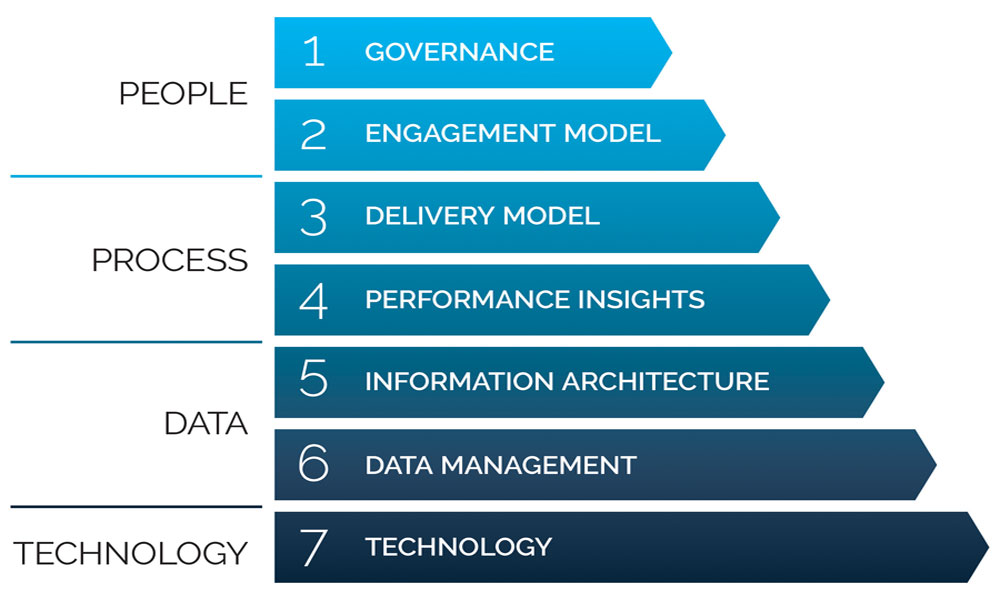When an organisation asks Stellar to provide a Data Analytics solution, it won’t be long before they start to learn about Stellar’s Seven Essentials. That’s the model used by Stellar consultants to ensure each project starts right and stays on course.
In this series of articles, we explore the Seven Essentials, one by one.
By Grant Broadbent, Managing Director
A broken Delivery Model is usually the most obvious symptom of troubled BI projects.
Crucially, failure of the Delivery Model can often be responsible for the break-through failure of other Essentials such as Engagement and Governance.
The symptoms are easy to see: massive duplication of effort, distrust of IS, rogue BI projects randomly distributed throughout the enterprise, disengagement of key business units, technical people forever evaluating new tools, scores of expensive analysts playing with databases; personal Excel spreadsheets being used as documents of record, different departments jumping to contradictory conclusions – just to name a few.
Because of this, we typically spend more time defining, establishing and nurturing the Delivery Model than we do with most of the other Essentials.
Put simply, the Delivery Model refers to the process and supporting structure for deriving and serving insight into the organisation.
When we define a Delivery Model, we work with our customers to answer questions like these:
- Who should do the data crunching and who should perform the analytics processing?
- Why should I publish the insight I derive to a wider audience?
- How can we reduce instances of people misinterpreting information?
- Should we develop a traditional Data Warehouse?
- For this group, should we promote BI self-service or should we push out PDFs?
- Why can’t I just get access to all of the source system data and just go for it?
- Why should I trust the IS team with the task of producing the right information?
- Who pays for BI, and how?
- Who is part of the insight “supply chain”?
- Can we trust a wider audience with this information?
- What’s the relationship between data warehousing and analytics?
Successful BI programmes must have a robust Delivery Model with the right processes and structures featuring a mix of centralised and devolved components that is appropriate for each organization. There is no “silver bullet” formula for this; each organisation has its own specific needs. Stellar’s BI consulting process is designed specifically to confirm each organisation’s specific requirements and to formulate a unique Delivery Model that is tailored to these needs.
As will be seen in this series of articles, the Delivery Model inter-relates with all other Essentials and provides a solid foundation for a successful BI programme.






